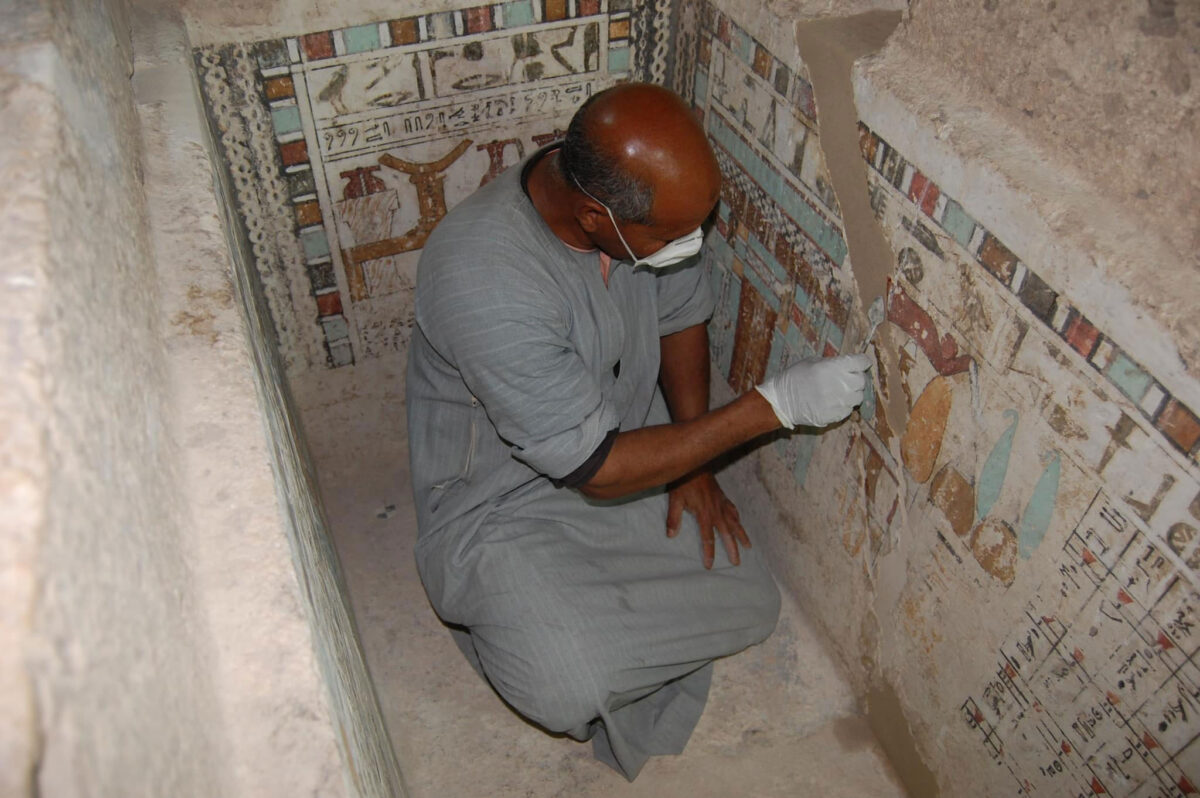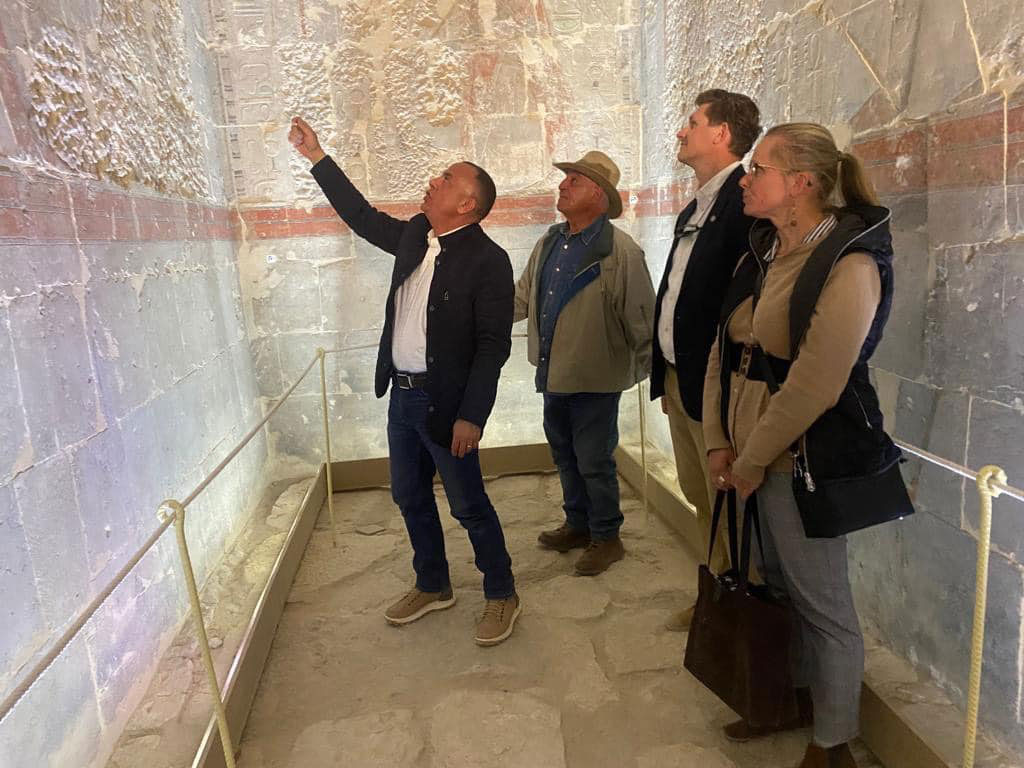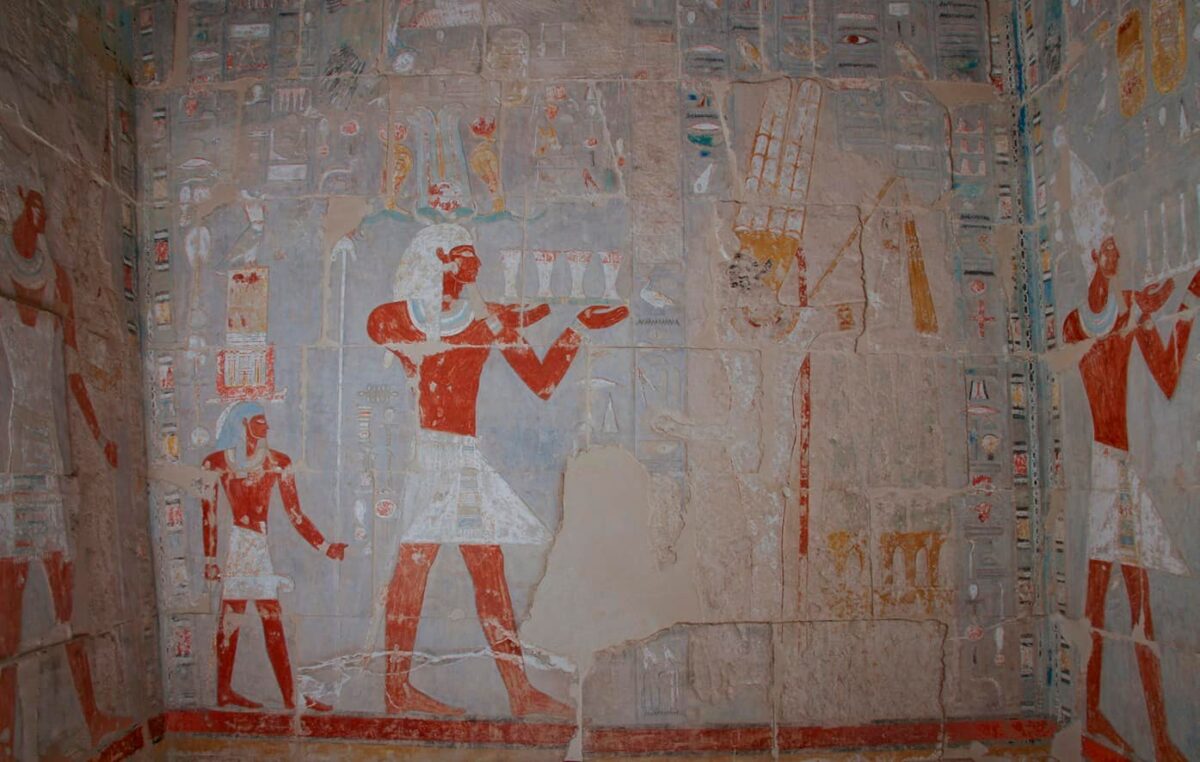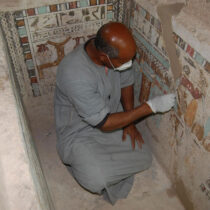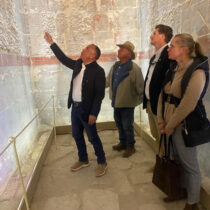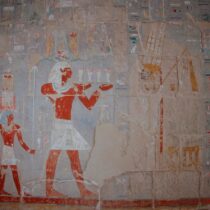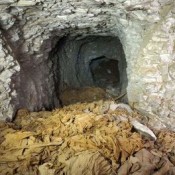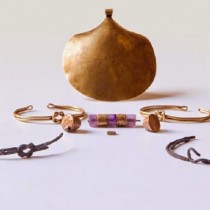Visitors of Luxor, Egypt, will now be able to access more chambers at the iconic temple of Hatshepsut at Deir El Bahari, get a grasp of Middle Kingdom art through the first tomb of that period that opens to the public.
According to a Ministry of Tourism and Antiqities press release, two chambers adjacent to the sanctuary of the god Amun at the Temple of Hatshepsut have been made accessible to the public following the completion of a study, documentation and restoration project. The project was run by the Polish Centre of Mediterranean Archaeology, which is currently carrying out research in the temple. The formal opening was attended by representatives of the Supreme Council of Antiquities and the Polish Centre, including the Secretary General Dr. Mostafa Waziri, and the Centre’s Director Dr. Anna Wodzinska.
Dr. Mostafa Waziri explained that the two chambers surround the main chamber dedicated to Amun in the Temple of Hatshepsut, which was opened to the public in 2017. Inscriptions on the walls of the southern chamber document that it probably stored aromatic materials and linen used during religious rituals. The walls of the northern chamber, whose use is not yet known, depicted scenes with Queen Hatshepsut and King Thutmose III offering to Amun and performing other ritual actions (eg. running with oars) as joined rulers. It is important that when Thutmose III ascended the throne as sole ruler, the images of Queen Hatshepsut were removed from the decorations throughout the temple.
For her part, Dr. Anne Wodzinska indicated that behind the doors of both rooms, there is a scene depicting the engineer Senmut, Hatshepsut’s chief courtier, in a standing position. Inscriptions document that the queen had allowed for his name to be written in all the rooms of her temple. The fact that Senmut is pictured inside these two rooms only, and he is standing rather than kneeling, might suggest a special function for these two rooms.
The press release also reports the opening of Meru, a nobleman who lived during the time of Mentuhotep II, of the 11th Dynasty. Carved into a rocky cliff called North Assasif, which forms the continuation of the rocky amphitheater at Deir el-Bahri, the tomb represents the earliest tomb currently opened to the public at West Luxor. The tomb faces the processional road that led to the Temple of Mentuhotep II, which was next to (and a prototype of) the Temple of Hatshepsut. It consists of a façade and a corridor leading to an offering compartment with a niche for the statue of the deceased. There is also a burial well, at the end of which there is a burial chamber with a sarcophagus. This room is the only one decorated in the tomb, as its walls were painted in a distinctive way, carried out with paint on a base of lime plaster. Fo the record, the North Asasif cemetery was the burial site reserved for the most prominent officials in Egypt from the Middle Kingdom onwards.
